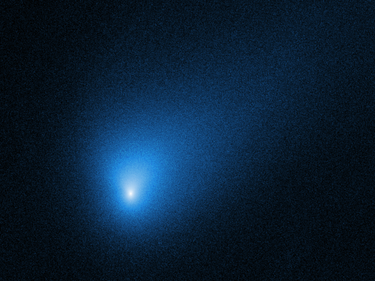In Today’s Deep Space Extra… As the Hubble Space Telescope nears 31 years in orbit, operators believe the observatory is showing its age. The coronavirus pandemic is taking a financial toll on NASA initiatives estimated at $3 billion.
Human Space Exploration
MAF continues tornado/hurricane recovery while building SLS stages under pandemic restrictions
Coalition Member in the News – Boeing
NASAspaceflight.com (3/31): NASA continues to oversee repairs to the outside of the Michoud Assembly Facility (MAF) buildings from recent weather damage and upgrades to protect against future extreme weather. While the building undergoes repair, the agency and Space Launch System (SLS) prime contractor Boeing are moving into the final phases of integration of the rocket’s second core stage elements, continuing production of the third core stage, and preparing for Exploration Upper Stage (EUS) manufacturing, set to start later this year. Access to MAF remains restricted by the COVID-19 pandemic.
Nevada company plans space station with inflatable pods
Coalition Member in the News – Axiom Space
UPI (3/31): Sierra Nevada unveiled plans on Wednesday to launch a commercial space station with expandable habitats within seven years. NASA is encouraging the development of commercial free flyer hosts to the agency’s low Earth orbit human space activities once the International Space Station (ISS), which has been staffed continuously for more than 20 years, is retired. The inflatable elements, called Large Inflatable Fabric Environment, or LIFE, would have volumes comparable to three-story structures and include sleeping quarters, a laboratory, and equipment to grow food, according to Janet Kavandi, the company’s executive vice president and a retired NASA astronaut.
Space Science
NASA blames recent Hubble woes on aging hardware
Spaceflightnow.com (3/31): In early March, the Hubble Space Telescope slipped into safe mode after experiencing software and other difficulties including an interruption in Wide Field Camera 3 observations. The world’s signature space observatory will mark its 31st anniversary in orbit on April 24. At least some of the difficulties are age-related, according to Paul Hertz, the head of NASA’s astrophysics division, in a brief to the agency’s Astrophysics Advisory Committee in mid-March. Hubble was last serviced by space shuttle astronauts in 2009.
Interstellar interloper 2I/Borisov may be the most pristine comet ever observed
Space.com (3/31): In 2019, astronomers discovered the first known interstellar object, 21/Borisov, to enter the solar system. Two studies suggest the discovery was a scientific windfall in that the light coming from Borisov was so polarized that the radiance may have had little prior encounter with the light or wind from other stars. The compact nature of the material from which Borisov is made suggests the comet was formed during an impact process close to its home star. The studies were published in the journals Nature Communications and Nature Astronomy.
Other News
NASA IG: $3 billion hit to NASA programs due to Covid
Spacepolicyonline.com (4/1): The COVID-19 pandemic is taking a financial toll on NASA that is estimated to reach nearly $3 billion, according to an assessment from the agency’s Inspector General (IG). The toll was placed at $1.6 billion as of the end of the 2020 fiscal year. The assessment was focused primarily on major NASA programs and projects, or those with life cycle costs of $250 million or more. The Science Mission Directorate (SMD) is reporting the largest impact, almost $1 billion.
The Deep Space Food Challenge wants your help to feed astronauts of the future
Space.com (4/1): A partnership between NASA and the Canadian Space Agency (CSA), the Deep Space Food Challenge aims to generate new food production technologies with little resources required. The idea is for future deep space astronauts to be able to focus on their work during missions and not worry food production. Eventually, the food technologies derived from the challenge may be repurposed in places on Earth with reduced food resources.
New reports highlight Russian, Chinese advances in space weapons
SpaceNews.com (4/1): New reports from the Center for Strategic and International Studies (CSIS) and the Secure World Foundation (SWF) express concerns over Russian weaponry that poses an increasing anti-satellite threat, a rising tension reminiscent of the U.S./Soviet Cold War, and over China’s development of a new space plane that is believed to have demonstrated a small satellite launch.

